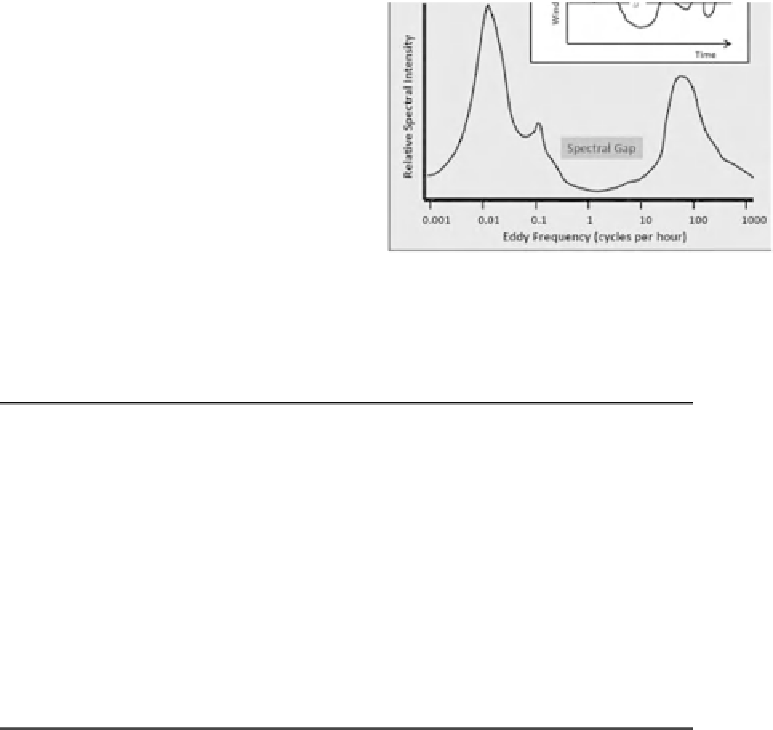Geoscience Reference
In-Depth Information
15
Mathematical
and Conceptual
Tools of
Turbulence
Introduction
The movement of momentum downward from the atmosphere into the Earth's
surface and the transport of water vapor, heat, and minority gases between the
surface and the overlying atmosphere are primarily by the mechanism of turbulent
transport. Consequently, a basic understanding of the turbulence that occurs in
the atmospheric boundary layer is a necessary component of hydrometeorological
understanding. This chapter provides an introduction to the concept of atmos-
pheric turbulence and to the mathematical tools used when deriving equations
that describe it.
Signature and spectrum of atmospheric turbulence
If a fast response sensor of any weather variable is placed a few meters above the
ground in daytime conditions, the measurement it provides will reveal evidence of
apparently haphazard variability in the atmosphere. Figure 15.1 shows an example.
In this case the measurement recorded on the chart recorder trace shown is of
horizontal wind speed made with an anemometer capable of responding to
changes at a time scale of greater than 10 seconds. The measured wind speed is
recorded for about two and a half hours from 12:00 to 14:30 local time.
What does this chart recorder trace disclose? Careful inspection of Fig. 15.1
reveals the following.
a.
There are clearly visible quasi-random fluctuations in the measured wind
speed, the pattern of which is not regular and not wave like.
b.
The mean value of the measured wind speed is changing with time from around
6 m s
−1
between 12:00 and12:30 to around 5 m s
−1
between 14:00 and 14:30.





